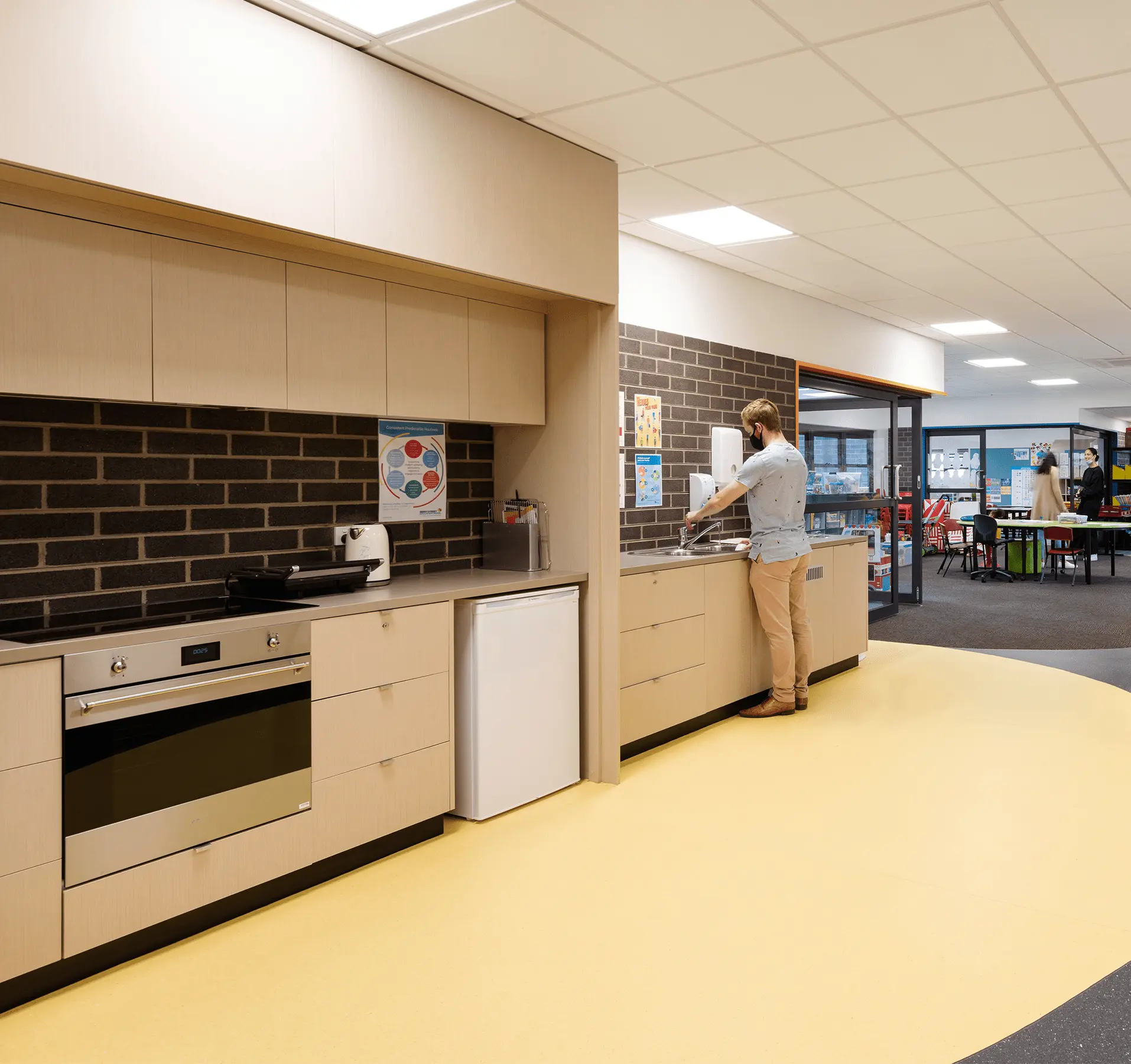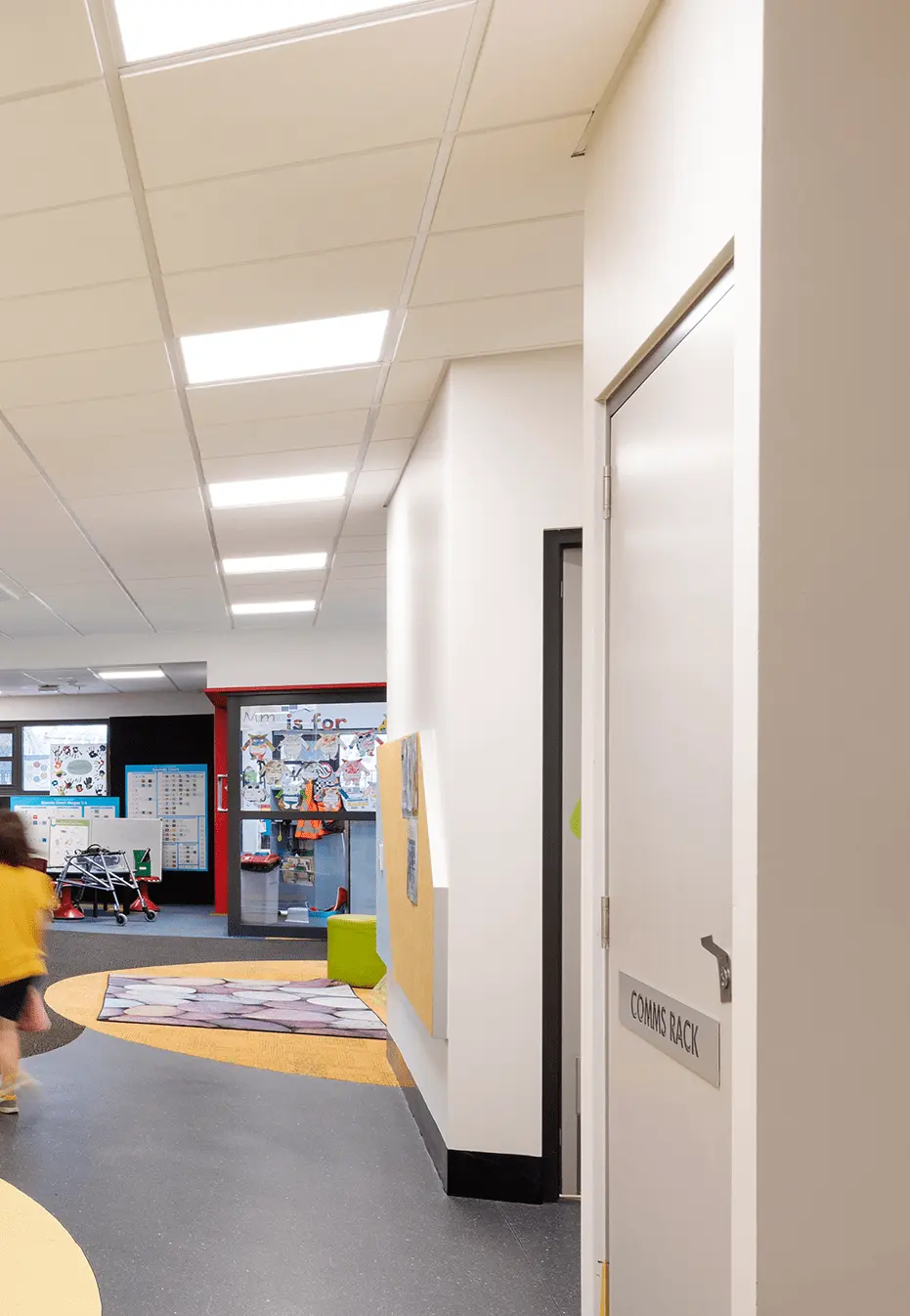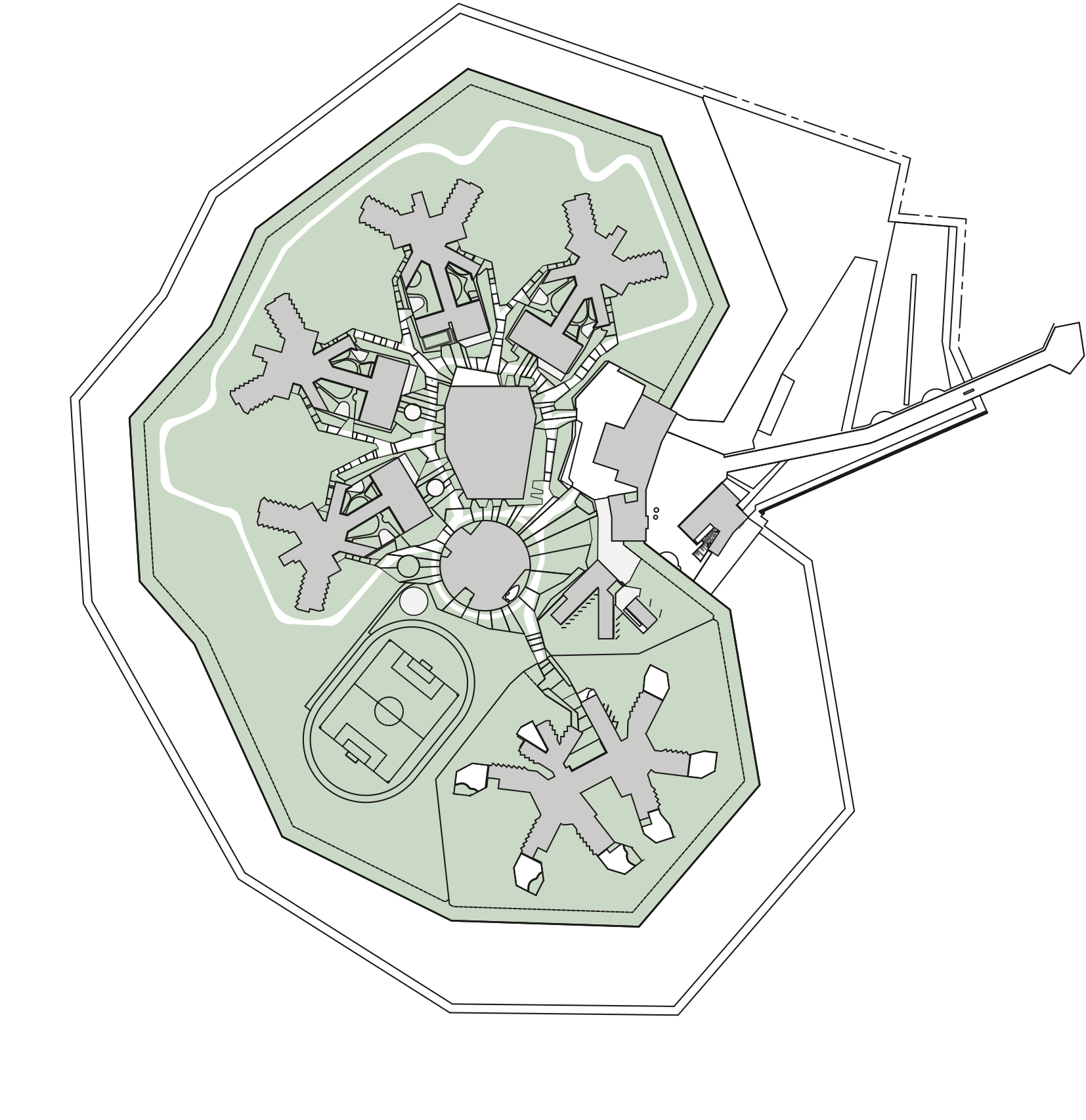











Charles LaTrobe College
ARCHITECTURE
/
LANDSCAPE
/
INTERIORS
Charles LaTrobe College
GB-A was engaged to develop a masterplan and design for the replacement of Olympic Village Primary School. Located in Heidelberg West, home of the athletes’ village for the 1956 Melbourne Olympic Games, the project takes inspiration from the local history and the shared desire to create a ‘community for learning’.
The result is an educational village that encompasses the ethos of the Olympics, encouraging students of all backgrounds to come together and strive for excellence. The new classrooms, library, multi-purpose room kitchen, staff lounge, workspace, and entrance foyer are represented as homes that open around a village green to foster a feeling of security and warmth, provide a legibility in layout.
With flexible learning a major focus, classrooms are clustered in groups of three around central common space to promote shared teaching options between classes and private outdoor learning areas. Student safety was a key design priority, which centralised access points, new fencing and kiss-and-drop[1]zones created. Passive supervision is maximised throughout all aspects of the design.
Stage A works included the refurbishment and extension of an existing two-storey classroom block as well as the construction of a new covered walkway through the centre of the school.
PROCESS
The result is an educational village that encompasses the ethos of the Olympics, encouraging students of all backgrounds to come together and strive for excellence. The new classrooms, library, multi-purpose room and kitchen, staff lounge and workspace, and entrance foyer are represented as homes that open around a village green to foster a feeling of security and warmth and provide legibility in layout. With flexible learning a major focus, classrooms are clustered in groups of three around a central common space to promote shared teaching options between classes and also have their own private outdoor learning area.
METHODOLOGY
Student safety was a key priority through the design, which features one central access point, new fencing and a new drive-through kiss-and-drop-zone. Passive supervision is also maximised throughout all aspects of the design.
AWARDS
2022
Learning Environments Australasia Awards
New Individual Facility Under $8 Million – Commendation
TRADITIONAL CUSTODIANS OF THE LAND
The Woiworung People
COMPLETION
2019
LOCATION
Heidelberg West, Victoria
CLIENT
Olympic Village Campus
PROJECT CONTACT
PHOTOGRAPHY
Guymer Bailey Architects
VALUE OUTCOMES
“GB-A were an absolute pleasure to work with. The team on site and in the office never cut corners and were committed to delivering a very high quality project.”
Jim Spainard, Golburn Enterprise


Designing for a sustainable future is a core part of our organisational philosophy. Drawing on the knowledge from our Greenstar accredited team members and specialist consultants in environmentally sustainable design, we ensure our project teams integrate creativity with scientific rigour, to create designs that are conscientious of the natural environment and local ecology. Designing for a sustainable future is a core part of our organisational philosophy.
PRINCIPLES OF PASSION
During the design process, our project team not only considers the physical context of the designs but also examines the social and cultural context. Through every design, we look for ways to inspire positive attitudes, behaviours and emotional responses in people to encourage the responsible use of resources, increase cooperation among occupants, and communicate the values of society and cultural diversity.
Designing for a sustainable future is a core part of our organisational philosophy. Drawing on the knowledge from our Greenstar accredited team members and specialist consultants in environmentally sustainable design, we ensure our project teams integrate creativity with scientific rigour, to create designs that are conscientious of the natural environment and local ecology.


We design built environments from a holistic, sustainable perspective: each project reconciles ecological and social impacts within the current economic climate. We holistically evaluate environmental, cultural and financial sustainability in every task we undertake.
